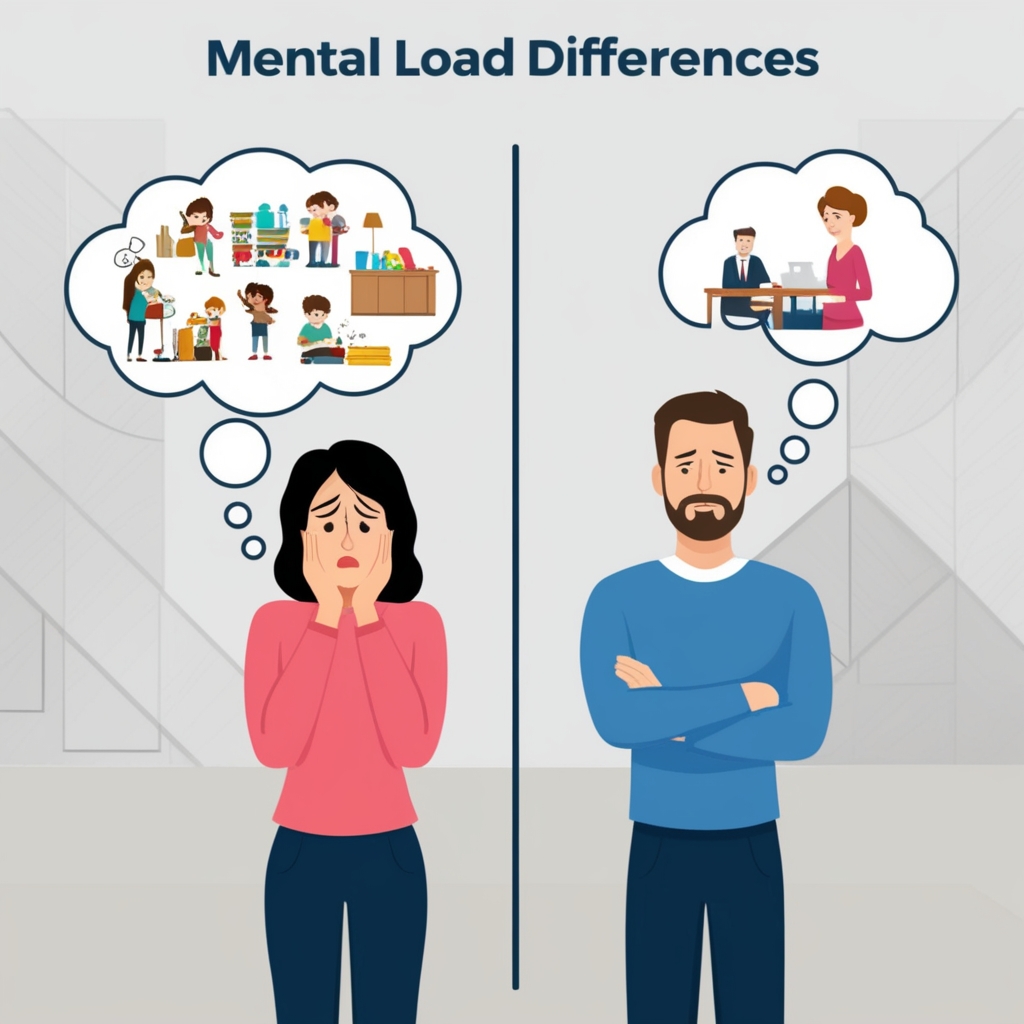
Mental Load: Women vs. Men
In today’s world, discussions around equality often focus on visible factors like wage gaps or leadership opportunities. Yet, one deeply ingrained issue remains largely invisible but profoundly impactful: the mental load carried by women versus men. Mental load refers to the invisible, often unnoticed, cognitive work involved in managing tasks, organizing schedules, and keeping everything running smoothly in a household or workplace. The differences in how this load is distributed between genders are stark—and disturbing.
Let’s explore the dynamics behind mental load, why women disproportionately bear it, and how it affects their lives compared to men.
What Is Mental Load?
Mental load is not just about completing tasks; it’s the constant planning, anticipating, and decision-making required to ensure those tasks get done. This invisible burden includes things like:
- Remembering family appointments and deadlines.
- Tracking school activities, meals, and grocery lists.
- Managing household chores and keeping tabs on everyone’s needs.
Unlike physical tasks, mental load is intangible but relentless, requiring someone to always “keep track” of everything. And often, that “someone” is a woman.
The Disproportionate Burden on Women
1. Social Conditioning and Gender Roles
From an early age, women are often socialized to be caretakers. Society places expectations on women to be:
- Primary caregivers for children.
- Managers of household affairs.
- Emotional support systems for family members.
Even in dual-income households, where both partners work full-time, studies show that women often shoulder the majority of domestic responsibilities. While men may contribute to specific tasks, women are frequently the ones managing the mental checklist.
2. The “Default Manager” Role
In many households, women take on the role of the default manager—the person responsible for ensuring that everything gets done. For example:
- Noticing that the milk is running low and adding it to the grocery list.
- Organizing birthday parties, playdates, or family gatherings.
- Keeping track of which child needs a dentist appointment or new school supplies.
Even when men are willing to help, women often have to “delegate” or remind them, further increasing their cognitive burden.
How Men Experience Mental Load
While men are not immune to mental load, the nature and scope of their burden tend to differ. Men are often more focused on specific, isolated tasks rather than the overall orchestration of responsibilities. For instance:
- They may handle tasks like taking out the trash or mowing the lawn but don’t feel responsible for the overall cleanliness of the house.
- They are less likely to remember routine appointments or track family schedules.
- Their mental load tends to revolve around work-related stress rather than household or emotional labor.
This doesn’t mean men don’t experience stress or responsibility, but their mental load is typically less multifaceted than that of women.
The Emotional Toll of Unequal Mental Load
1. Burnout and Stress for Women
The constant juggling of responsibilities leads many women to feel exhausted and overwhelmed. This emotional toll can manifest as:
- Anxiety from the never-ending list of tasks.
- Sleep deprivation from worrying about things not getting done.
- Guilt over feeling like they are “failing” at managing it all.
2. Impact on Relationships
The unequal distribution of mental load often creates tension in relationships. Women may feel resentful toward their partners for not taking on a fair share of the cognitive work, while men may feel defensive, claiming they “help out” enough.
This imbalance can lead to:
- Arguments about chores and responsibilities.
- Women feeling unsupported or undervalued.
- Men feeling unfairly criticized despite their contributions.
3. Professional Impacts
For women balancing a career and home life, the additional mental load can hinder their professional growth. The energy spent on managing household tasks often leaves them with less bandwidth to pursue career opportunities or engage in self-care.
The Need for Change
1. Open Communication
The first step in addressing the mental load disparity is for couples to communicate openly about responsibilities. Women should feel empowered to express their concerns, while men should actively listen and recognize the invisible work being done.
2. Shared Responsibility
True equality in mental load requires both partners to:
- Share the responsibility for planning, not just execution.
- Take ownership of recurring tasks without needing reminders.
- Develop a system where mental load is distributed evenly.
3. Breaking Social Norms
Society as a whole needs to challenge traditional gender roles that place an unfair burden on women. This includes teaching boys from a young age that household management and emotional labor are not solely “women’s work.”
A Vision for a Balanced Future
Addressing the mental load disparity is not just about easing women’s burden—it’s about creating a more equitable and supportive environment for everyone. When men and women share responsibilities fairly, relationships thrive, stress decreases, and individuals feel more valued and respected.
By recognizing the disturbing differences in mental load and taking proactive steps to address them, we can pave the way for healthier partnerships and a more balanced society.






